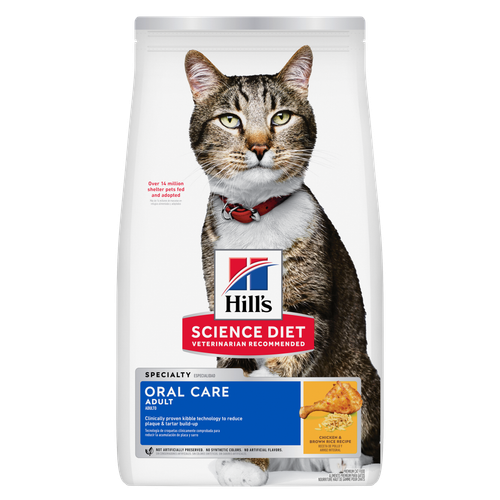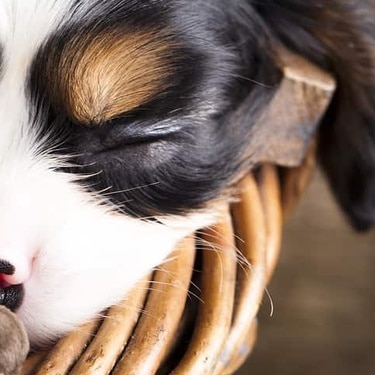
-
Find the right food for your petTake this quiz to see which food may be the best for your furry friend.Find the right food for your petTake this quiz to see which food may be the best for your furry friend.Health CategoryFeatured products
 Hill's Science Diet Adult Healthy Mobility Large Breed Chicken Meal, Barley & Brown Rice Recipe Dog Food
Hill's Science Diet Adult Healthy Mobility Large Breed Chicken Meal, Barley & Brown Rice Recipe Dog FoodAdvanced nutrition shown to support joint health and improve mobility
Shop Now Adult Large Breed Chicken & Barley Recipe Dog Food
Adult Large Breed Chicken & Barley Recipe Dog FoodSupports healthy joints, lean muscle, and beautiful coat for large breed dogs
Shop Now Adult Light Large Breed Chicken Meal & Barley Recipe Dog Food
Adult Light Large Breed Chicken Meal & Barley Recipe Dog FoodFewer calories for less active large breed dogs
Shop NowFeatured products Adult Perfect Digestion Chicken, Barley & Whole Oats Recipe Cat Food
Adult Perfect Digestion Chicken, Barley & Whole Oats Recipe Cat FoodHill's Science Diet's breakthrough nutrition supports ultimate digestive well-being & healthy microbiome
Shop Now Adult Sensitive Stomach & Skin Pouch Variety 12 Pack Cat Food, Chicken & Beef, Salmon & Tuna
Adult Sensitive Stomach & Skin Pouch Variety 12 Pack Cat Food, Chicken & Beef, Salmon & TunaCarefully made, gourmet daily nutrition. Tasty chunks with Salmon & Tuna in a decadent gravy. Supports digestive health, nourishes skin and promotes a lustrous fur.
Shop Now Adult Oral Care Chicken & Brown Rice Recipe Cat Food
Adult Oral Care Chicken & Brown Rice Recipe Cat FoodClinically proven kibble technology to reduce plaque & tartar build-up
Shop Now -
DogCat
- Cat Tips & Articles
-
Health Category
- Weight
- Skin & Food Sensitivities
- Urinary
- Digestive
- Kidney
- Dental
- Serious Illness
-
Life Stage
- Kitten Nutrition
- Adult Nutrition
Featured articles Fun Ideas for Kids and Pets This Summer
Fun Ideas for Kids and Pets This SummerOutdoor summer activities with your dog or cat can be fun for kids, too. Learn how they also teach kids responsibility & creates a bond with their pet.
Read More Adopting a Pet: What You Need to Know
Adopting a Pet: What You Need to KnowLearn the basics of adopting a pet, including where to begin and common questions you should ask yourself when deciding which kind of pet is best for you.
Read More Cat vs. Dog: Which Is the Best Pet for Me?
Cat vs. Dog: Which Is the Best Pet for Me?Learn about important differences between dogs and cats, such as cost & space considerations. These factors can help you decide which pet is best for you.
Read More -


Maybe you heard about it on the radio on your way into work, or maybe you read about it on social media. No matter how you found out, the news of animals impacted by natural disasters shocked your system. Your think of the many people evacuating their homes, and the thousands of beloved pets who, for any number of reasons, are separated from their families. You know there's an incredible need for animal rescue after natural disasters, and you want to help — but where do you start?
The good news is that you're not alone. Animal welfare organisations all across the country have pitched in to care for animals in the aftermatch of natural disasters. They have provided many opportunities for you to support disaster relief efforts for these pets in their time of need. By volunteering your time, space or any resources you can spare, you can play a major role in saving an animal's life.

Volunteer Your Time
If you've heard about a crisis in a neighboring state, you may be ready to spring into action. But when it comes to animal rescue after natural disasters, consider your own safety first and foremost. Affected areas can remain dangerous long after major weather events have subsided. First try contacting local or national animal welfare organisations devoted to caring for animals in natural disasters.
If you're not sure where to start, try calling local veterinarians. Many animal specialists are connected to, or at least familiar with, volunteer organisations that may be preparing to provide on-the-ground support. An online search for "local animal welfare organisations" may offer guidance as well. Once you have a contact, they can walk you through next steps and equip you for the tough, rewarding work ahead.
Another important way you can donate your time is community organising. Many organisations need food, water, first aid kits, treats, toys and money to care for displaced animals. Try gathering friends or neighbors to run a resource drive to support your cause. Local pet stores may be able to help spread the word about your efforts and perhaps even donate additional supplies. Local organisations can work with you to deliver your donations to the places that need them most.


Tasty Tips
Young pets may need several visits in their first year for vaccinations. Adult pets generally benefit from annual check-ups, while senior or special-needs pets might require more frequent visits.
If you're interested in doing this type of volunteering, the best time to start getting connected to an organisation is before disaster strikes. Doing so can help give you enough time to get trained or placed on a certain team before you need to deploy to a disaster zone. This also benefits rescue organisations, because while volunteers are vital to their success, their focus will be on helping pets when the time comes — not trying to equipd you with the skills you need to be a resource.
Volunteer Your Home
In the wake of weather crises, many displaced pets simply need to be safely relocated and cared for until they find their forever homes.
If you have space in your home and the time to devote to pet care, consider becoming a foster parent. Reach out to local animal welfare organisations and shelters to let them know that your home is safe and dry, and that you're committed to sharing it with animals in natural disasters. Even if you're not aware of an urgent situation, you can offer your help now for any future need that arises.
Provide Resources
It might not be feasible for you to join a volunteer organisation or foster a pet. But that doesn't mean you can't make a difference. Consider asking an animal welfare organisation what supplies they need. Then create a shopping list and pick up those items to contribute. Or consider donating money to support the organisations involved with pet rescue year round.
When natural disasters strike, there is no shortage of need for warm hearts and strong hands. By assisting experts and organisations however you can, you'll be touching and saving more lives than you might ever know.


Erin Ollila believes in the power of words and how a message can inform—and even transform—its intended audience. Her writing can be found all over the internet and in print, and includes interviews, ghostwriting, blog posts, and creative nonfiction. Erin is a geek for SEO and all things social media. She graduated from Fairfield University with an M.F.A. in Creative Writing. Reach out to her on Twitter @ReinventingErin or learn more about her at http://erinollila.com.
Related products

Advanced nutrition shown to support joint health and improve mobility

Fewer calories for less active dogs

Supports healthy joints, lean muscle, and beautiful coat for large breed dogs

Fewer calories for less active large breed dogs
Related articles

Open admission animal shelters help end animal abandonment, homelessness, and unnecessary euthanasia. Learn more about the shelters and how you can help.

Learn the basics of adopting a pet, including where to begin and common questions you should ask yourself when deciding which kind of pet is best for you.

Outdoor summer activities with your dog or cat can be fun for kids, too. Learn how they also teach kids responsibility & creates a bond with their pet.

Learn about important differences between dogs and cats, such as cost & space considerations. These factors can help you decide which pet is best for you.

Put your pet on a diet without them knowing
Our low calorie formula helps you control your pet's weight. It's packed with high-quality protein for building lean muscles, and made with purposeful ingredients for a flavourful, nutritious meal. Clinically proven antioxidants, Vitamin C+E, help promote a healthy immune system.
Put your pet on a diet without them knowing
Our low calorie formula helps you control your pet's weight. It's packed with high-quality protein for building lean muscles, and made with purposeful ingredients for a flavourful, nutritious meal. Clinically proven antioxidants, Vitamin C+E, help promote a healthy immune system.

